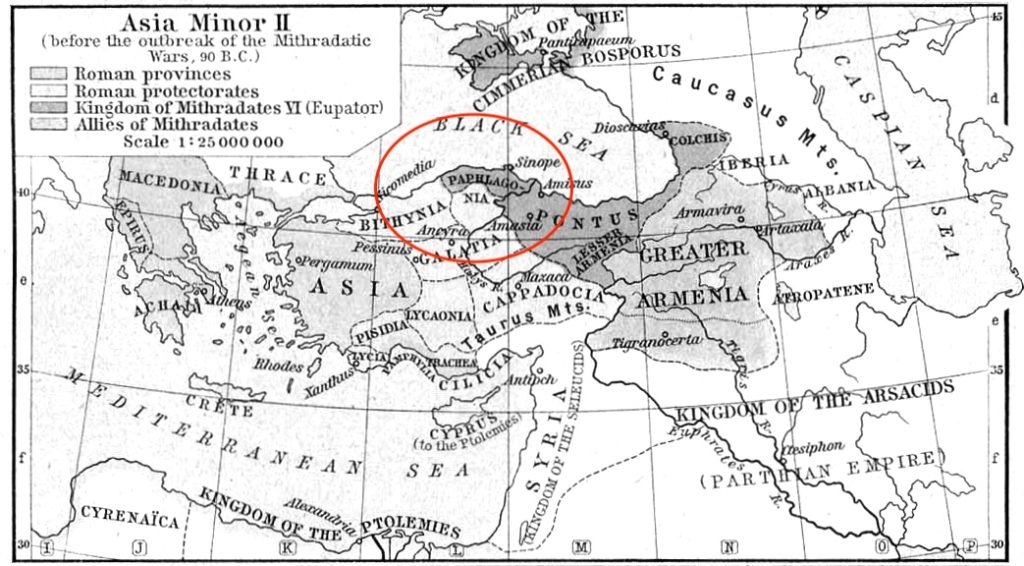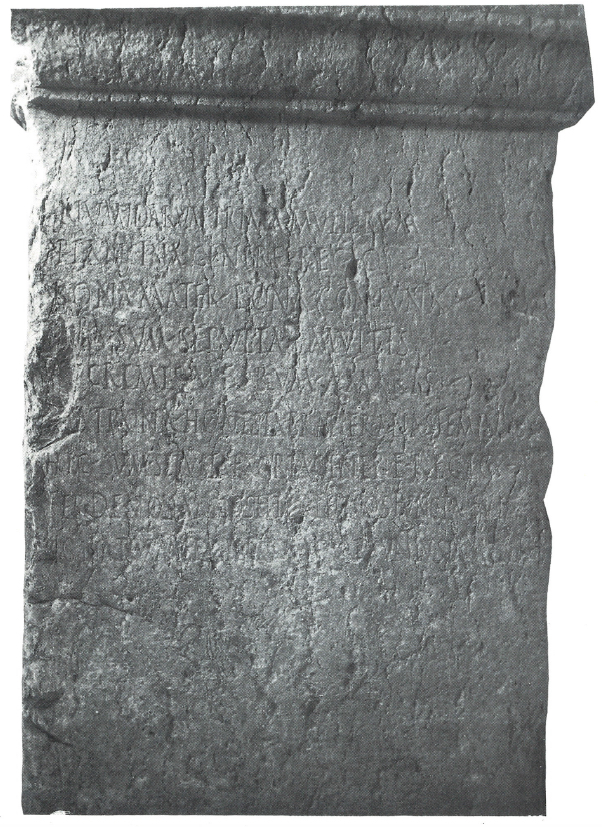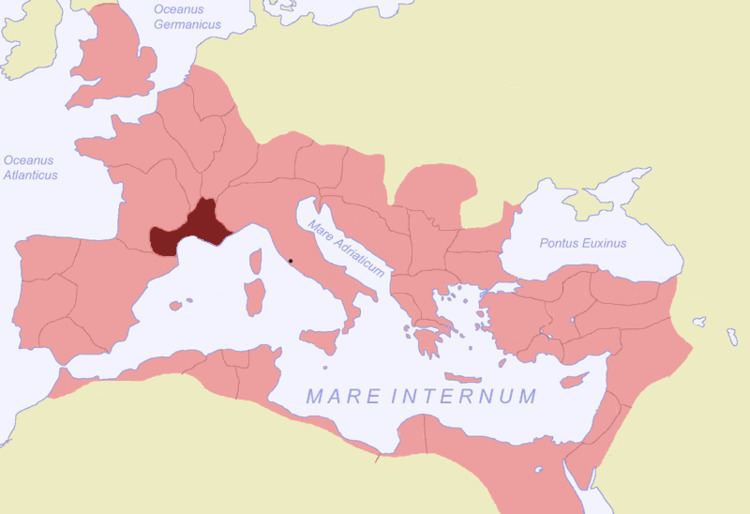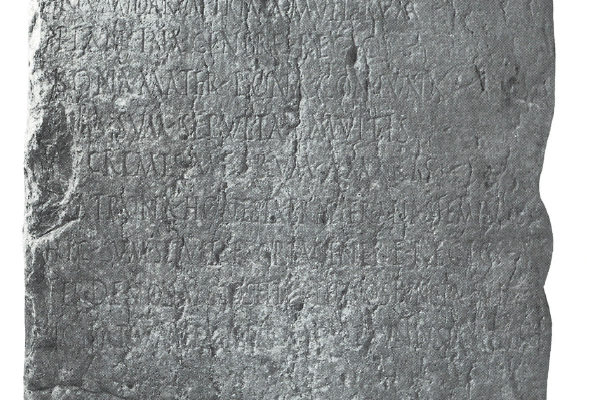Celebrating Women from across the Roman World
In anticipation of International Women’s Day, 2020, we would like to commemorate a selection of women, from all runs of life, whose existences and experiences – rich and hugely diverse – were celebrated in verse epitaphs from across the Roman Empire.
Based in Vienna ourselves, we will start our tour in Pannonia (superior), in nearby Carnuntum. From there, we will go through the Roman Empire, circling the Mediterranean clockwise, heading to Dacia first, across the Bosporus to Paphlagonia, then continuing our tour in Africa proconsularis, heading over to the province of Baetica on the Iberian peninsula, over to Gaul, and finally to the city of Rome herself.
If you would like to read more about women celebrated in Latin epitaphs in particular, we highly recommend reading the beautiful anthology ‘De mulieribus epigraphicis. Tradición e innovación’, produced by our colleague Concha Fernández Martínez (available here) as well as her lecture ‘Entre la literatura y la vida: el elogio fúnebre a la mujer romana’ (available here).
Pannonia superior

➤ Epitaph for Vibia Citheris
Carnuntum (Pannonia Superior)
CIL III 11281 = CLE 1565 = Lupa 1747 (first century A. D.) – Photo: Ortolf Harl.

Vibia C(ai) l(iberta)
Citheris
an(norum) XI h(ic) s(ita) e(st).
Virgo hic sepul-
ta fida puella ia-
cet ante quidem
tempus fata rapue-
runt mala scripsi
ego per lacrimas
miserabilis mor-
te puellae p(ater) p(osuit)
– – – – – –
“Vibia Citheris, freedwoman of Gaius, aged 11, lies here. A virgin lies buried here, a dutiful girl. Yet evil fates snatched her away in an untimely manner. I wrote this, sorrowful, in tears due to the girl’s death. The father had (sc. this monument) placed.”
Dacia
➤ Epitaph for Aelia Hygia

Micia (Vetel) (Dacia)
CIL III 7868 = CLE 1558 = IDR III 3.159 = Lupa 11797 (second or third century A. D.). – Image: Clauss – Slaby database.

D(is) M(anibus).
Aelia Hygia uixit
annos XVIII.
Ael(ius) Valent[inus dec(urio?)]
col(oniae) Apul(ensis) fl(amen)
libertae et coniugi
gratae
quam tempus durum
rapuit familiam-
quae simul. Dacia te
uoluit, possedit
Micia secum. haue,
puella, multum adque
in aeuum uale.
“To the Spirits of the Departed. Aelia Hygia lived 18 years. Aelius Valentinus, decurion (?) of the colonia (Aurelia) Apulensis, flamen, (sc. had this made) for his freedwoman and dear wife, whom a hard time snatched away – with my family at the same time. Dacia wanted you, Micia holds you in its possessions. Greetings, girl, many a time – and farewell forever.”
Paphlagonia
➤ Epitaph for Domnina

Nea Klaudiupolis (Paphlagonia)
SGO 11/03/02 (second or third century A. D.).
Σπεῦ[σας]
ἐς ἀθα[νά]-
τους, Δο[μνεῖν’],
ἄνδρός δ’ ἀμέ-
λησας, ἀστράσιν
οὐρανίοις σῶ-
μα καθηραμέ-
νη· οὔ τις ἐρῖ με-
ρόπων, ὅτι δὴ
θάνες, ἀλλ’ ὅ-
τι πάτρην ῥυ-
ομένην νού-
σων ἅρπασαν
ἀθάνατοι. χαῖ-
ρε καὶ Ἠλυσίοις
ἐπιτέρπεο, σοῖς
δ’ ἄρ’ ἑταίροις
λύπας καὶ θρή-
νους κάλλιπες
ἀϊδ<ί>ους.
“Upwards you rushed, Domnina, to the immortals, neglecting your husband, and you cleansed your body among the heavenly stars. No mortal will claim that you died, but rather that the heavenly gods snatched you away as you were seeking to save your native town from diseases. Greetings – and enjoy the elysium; to your peers, however, you have left sorrows and eternal mourning.”
Africa proconsularis
➤ Epitaph(s) for Plancina

Sicca Veneria (El Kef) (Africa proconsularis)
CIL VIII 16159 (cf. p. 2707) = ILS 858 = CLE 1554 = ILTun 1599 (date unknown). – Photo: Clauss – Slaby database.

“First among the women of Numidia, of royal descent, I, Plancina, lie here, a good mother, a good wife, buried with many, bitter tears of my family members.“
“An honourable matron, above and beyond other women, I am buried here, born of royal descent, departed after thrice ten years and thrice three, the envy of good women: Quintus Arruntius Mas[cel?] (sc. had this made for her).”
Numidarum prima mulierum
Plancina genere regio
bona mater bona coniunx
hic sum sepulta multis
[l]acrimis meorum amaris.
matrona honesta praeter alias femina[s]
hic sum sepulta exorta genere regio
ter denos annos et ter ternos functa cur[a]
bonarum feminarum Q(uintus) Arruntius Mas[cel(?)].
Baetica
➤ Epitaph for Mussia Agele

Corduba (Cordoba) (Baetica).
CIL II (ed. alt). 7.498 (first century A. D.). – Photo: Clauss – Slaby database.

Mussia Agele.
Bis denis Agele florentibus annis
et specie et uita femina prima fuit .
hunc sortita locum miserae sunt ossa puellae:
hic raptam matri consociauit humus.
sedibus aeternis Agele non laesa quiescas
et bene coposita sit tibi terra levis.
[Two further short notes follow.]
“Mussia Agele. Agele, twice ten years in flower, was the foremost woman in beauty and in her ways. This place is the lot that fell to the bones of the poor girl: here the earth has joined the seized daughter with her mother. May you rest, Agele, unharmed in this eternal dwelling. May the well-placed earth rest lightly on you.” (translation: Rocío Carande Herrero – Concha Fernández Martínez, modified)
Gallia Narbonensis
➤ Epitaph for Aelia Aeliana

Arelate (Arles) (Gallia Narbonensis)
CIL XII 743 = CLE 454 (second or third century A. D.)
Aeliae Aelia[nae].
Littera qui nosti lege casum et d[ole puellae]:
multi sarcophagum dicunt quod cons[umit artus],
set conclusa decens apibus domus ist[a uocanda].
o nefas indignum iacet hic praecla[ra puella],
hoc plus quam dolor est, rapta est specios[a puella].
peruixit virgo ubi iam matura placebat,
nuptias indixit, gaudebant uota parentes:
uixit enim ann(os) XVII et menses VII diesque XVIII.
o felice patrem qui non uidit tale dolorem.
heret et in fixo pectore uolnus Dionysiadi matri
et iunctam secum Geron pater tenet ipse puellam.
“For Aelia Aeliana. You, who know the letters, read of a girl’s fate and feel the pain: many call a sarcophagus what consumes the limbs: but one must call this a house for bees, shut, and proper. Oh, here lies – an unworthy sacrilege! – a beautiful girl: this is more than just pain, an attractive girl has been snatched away. The girl lived to enjoy aspects of maturity, she announced her marriage, the parents were delighted over the pledge: for she lived 17 years, 7 months, and 18 days. Oh lucky father, who did not get to see such pain. Dionysias, the mother, has a wound tacked onto her heart, and, united with himself, Geron, the father, himself holds the girl.”
(On the beautiful image of the sarcophagus as a house for bees see a much older blog post on thepetrifiedmuse.blog.)
Rome
➤ Epitaph for Egnatuleia Urbana

Roma (Rome).
CIL VI 17130 (cf. p. 3520) = CLE 963 (12 B. C.) = EDR 132622.
For legal reasons, we cannot display an image of this inscription here. Follow this link for an excellent photo hosted by our friends over at the Epigraphic Database Rome (whose text, curated by Sara Meloni, we reproduce, below).
Egnatuleia ((mulieris)) l(iberta) Urbana
hic sita est.
Ó iucundum lumen superum, ó vitae iucunda volûptas,
florenti si non succederet invidia.
Invidus aurato surrexit mihi Lucifer astro,
cum miseram me urgeret invidia.
Ḅis duodenos annos iam processerat aetas,
cum me ex luce expulit officium.
Sed te nunc, Pietas, venerorque precorque
ut bene pro meriteis hilares Hilaram,
quae me servili nomine preivat
et dulci suo participat cinerem.
Sed tu, adulescens, quem Phrycia edidit tellus,
desiste lamenteis me exciere.
Namque tua officia grata mihi in luce fuerun̂t
et nunc demum ad cinerem.
IV kal(endas) Sex(tiles) P(ublio) Q(uirinio) C(aio) V(algio) c(onsulibus).
“Egnatuleia Urbana, freedwoman of a woman is buried here. Oh light that pleases those above, o pleasant joy of life, should envy not follow you when you are in full bloom! Jealous Lucifer rose for me with his golden star, when envy tortured me, wretched me! Twice twelve years – that is how far my age had already advanced, when necessity pushed me out of the light. Dutifulness, now I worship you, beseech you, so that you make Hilara as happy as she well deserves to be, who has taken my slave-name away from me, and is part of this burial with her own sweet name. But you, young man, who Phrygian soil has brought forth, stop waking me up with your laments. But your devotion was most welcome to me when I was still in the light, just as much as it is now, by my ashes. July 29th in the year of the consulship of Publius Quirinius and Gaius Valgius (i.e. 12 B. C.).”
We acknowledge the authorship of the following images (follow the links for documentation):
- Map of Pannonia
- Map of Africa proconsularis
- Map of Baetica
- Map of Gallia Narbonensis

